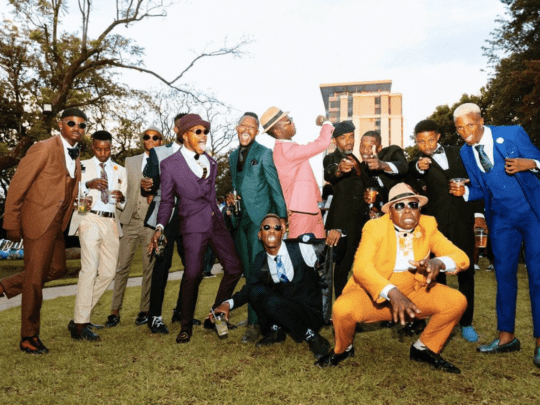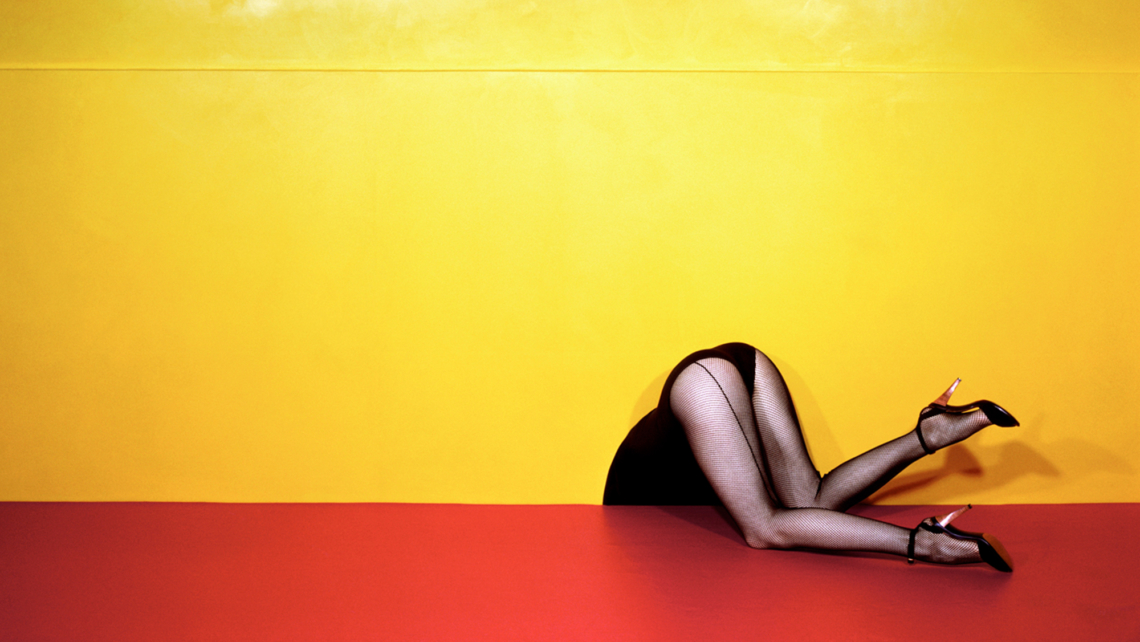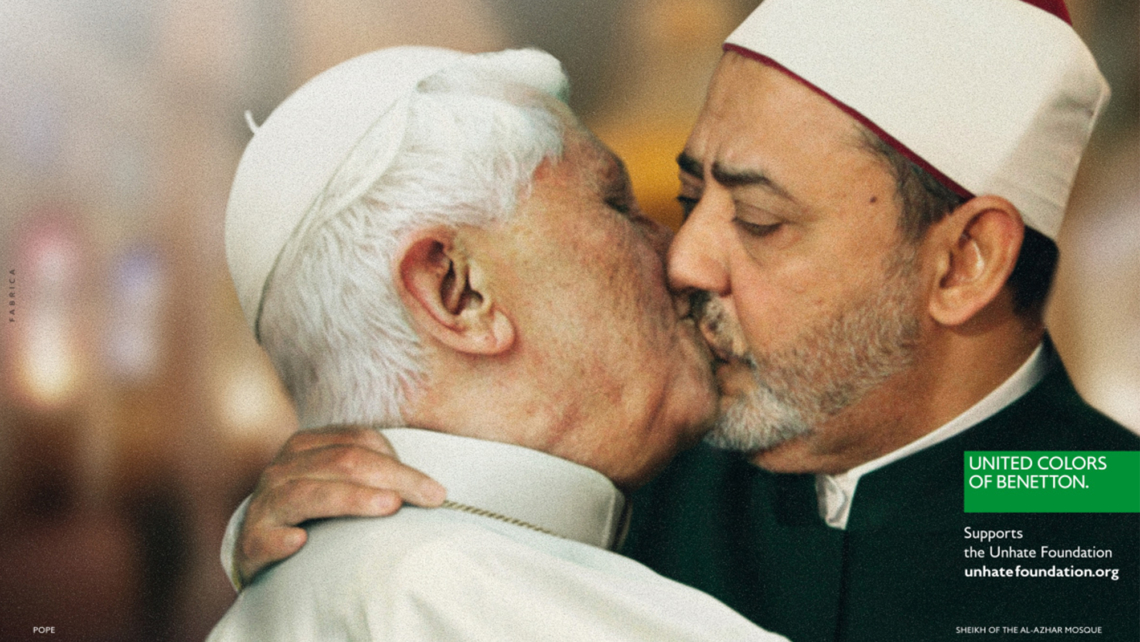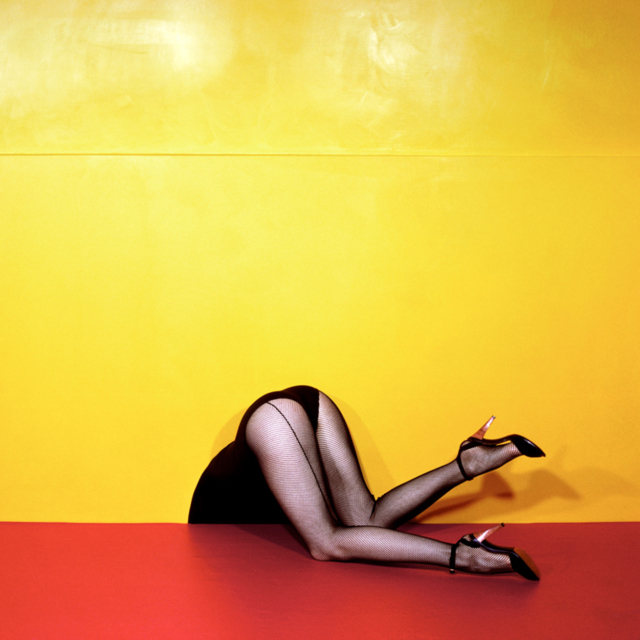Last week, it was announced that the Council of Paris voted to ban “sexist and discriminatory” ads from appearing in the city, a decision that appeared to be spurred by a Saint Laurent ad that featured models with their legs spread. Naturally, a discussion broke out in the FU offices about how fashion images are interpreted, our minds immediately going to some of fashion’s most provocative ads, and defending them. Why is it not okay for [insert controversial visual] to appear in ads, when you can walk into a museum and see it anytime? Perhaps it’s because viewers approach art and advertisement differently. In a way, art is an invitation—even if the artist is very clear in his intentions, there is space available for the viewer to have his own interpretation of the work. There is space for a dialogue. Advertising, on the other hand, isn’t really approached at all—we take it at face value. It is what it is, and depending on where we see it—in a targeted way (such as in the pages of a magazine), or subjected to it at random (on the street)—we either react or ignore.
Splayed Legs and Copulating Couples: How Commerce is Viewed Differently Than Art
A few days later, Eckhaus Latta’s new campaign broke, featuring real couples having sex. A fashion campaign that barely featured fashion, instead placing much of the focus on the people in the frame. Of course, the salacious bits were ultimately blurred out. Of course, sex has long been favored in fashion advertisements. Consider the images released by Tom Ford or Calvin Klein. Yves Saint Laurent even posed nude himself in a 1971 ad for Pour Homme. But somehow, the Eckhaus Latta images were different. While the other ads have leaned in to the sensuality (sex sells!), or reveled in taboo, the Eckhaus images were more personal.An emphasis was placed on the fact that these were real couples. Reactions to the ads revolved around how they were “sex-positive”, “body-positive”, just “positive” in general. Was this really selling the clothes, or were we simply meant to interpret the images as they were? Was the company actually forgoing a promotion of its product for a promotion of ideals? It was not dissimilar to Oliviero Toscani’s ads for United Colors of Benetton, which featured controversial political images rather than fun sweaters.
Fashion advertising sells both the fantasy of the clothing and the desire for it. Good fashion photography can become emblematic of the clothing or style it is meant to capture. Great fashion photography can transcend its own genre, becoming timeless, iconic, a work of art. But what makes a fashion photograph good? In order for the images to be successful, they must, in some way, connect to the viewers—appealing to who they are, the values held at that time, and condensing it all into a single frame which we can look at and say, “Yes, that’s us.” A great fashion photograph disrupts all this, sparking discussion, intrigue, and possibly making us forget that it was all just to display apparel.
Photography is a very important aspect of the fashion industry. As fashion is so heavily communicated through images (especially now in the digital age), it is necessary that we study exactly what is being communicated through careful analysis of these images. Just as it is important to study what values a society applies to the fashion system and how they communicate those values, it is important to look at what is being imparted to society by the media, and how fashion images and text shape the views of consumers.
However, the question must be asked when it comes to fashion photography: can we separate the art from the commerce?
It is undeniable that fashion photography is a creative act, and that there are certain aspects of the genre that can raise it to an art form. In his essay, “The Change in Fashion Photography,” fashion photographer and Purple magazine editor Olivier Zahm noted, “even the best fashion photography is still an industry in service of industry.” When judging the commerciality of an image, it helps to first break it down as simply as possible: what is for sale? For fashion, it’s clothing and accessories. And if clothing is the product, then any shift in focus away from it to the construction of an image pulls the reader’s attention away from what is for sale, and instead draws them to the image itself. If we consider the product shot to be absolute advertisement, and it’s opposite—the complete nude, and absence of clothing—to be absolute art, then the Eckhaus campaign, and almost all other fashion photography, falls somewhere in between.
That “in-between” is where things become more complicated, and fashion images need to begin to be considered as a sum of different elements, including the model, location, lighting, and even styling.
Consider Guy Bourdin’s surreal work for Charles Jourdan shoes, or Nars cosmetics—the images, which were often featured in double-page spreads, hinted at a story beyond the frame. Now, decades after the products stopped being on sale, the images are left to be viewed and discussed for their artistic qualities alone.
Ultimately, context is the most important aspect that needs to be considered. Advertising is, and always will be, a commercial entity. No matter how artistic the image is, even in its intention, once you slap a logo on something, you might as well attach a price tag, too.









